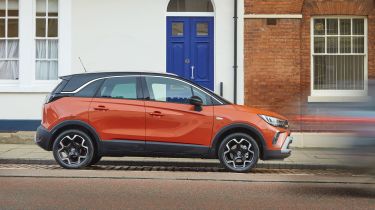Vauxhall Crossland (2017-2024) - Engines, performance and drive
Punchy 1.2 petrol engine delivers decent performance and refinement, but the Vauxhall Crossland isn’t a standout drive

Just so you know, this is an older review of the 2017-2024 Vauxhall Crossland. If you are interested in information about a used Vauxhall Crossland X, or news about the latest Vauxhall models, please follow the links provided.
As part of the Crossland's rather significant facelift in 2020, the small SUV received revised suspension and steering settings to make it feel better to drive, more comfortable, and more stable on motorways. The Crossland was never the best handling family car to begin with, and even with the new dampers and updated steering, it’s still not as fun to drive as a Ford Puma, nor can it beat the Volkswagen T-Cross for comfort.
In fact, we found the updated Crossland’s ride to be noticeably firm at low speeds, but the car did feel more stable and composed on faster roads. At motorway speeds, the Crossland is quite refined, although the wind noise we encountered means it’s not the quietest small SUV out there, and tyre roar is still an issue.
On a positive note, the engine line-up stands up well to scrutiny. Both the 108bhp and 128bhp versions of the 1.2-litre turbocharged three-cylinder petrol feel strong, with plenty of mid-range pulling power that makes getting up to speed easy. The manual gearbox is vague, but the ratios are well-judged. However, the auto can be a little jerky in town (it’s better with the start/stop system turned off) and there’s no four-wheel drive option despite the Crossland’s raised body and SUV appearance.
0-62mph acceleration and top speed
The Crossland is only available with a 1.2-litre turbocharged three-pot petrol engine, producing either 108bhp when paired with a six-speed manual gearbox or 128bhp if you spring for the six-speed auto 'box. The less potent set-up takes 10.5 seconds to do 0-62mph and will hit 116mph flat out, while the 128bhp version with its automatic transmission manages the same benchmark sprint in 9.9 seconds with a 125mph maximum.
We expect most people will be happy with the base combo because it copes admirably with town driving and longer motorway trips alike. It's the more economical of the two options on paper, which is a handy bonus. Both versions get fuel-saving stop-start technology.








